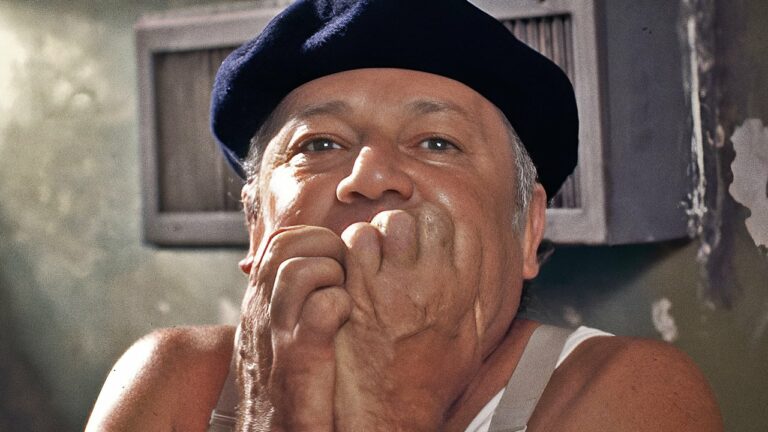
The TV film, directed by Giulio Base and accompanied by an evocative score by Ennio Morricone, offers a profoundly moving and intimate exploration of the life of Padre Pio (1887–1968), a figure revered by millions as a mystic, miracle worker, and saint. Spanning decades, the story focuses on key moments in Padre Pio’s life, beginning with the extraordinary events during World War I when he experienced the stigmata. This physical manifestation of Christ’s wounds occurred as he fervently prayed to take on the suffering of soldiers ravaged by the war, a pivotal event that marked the start of his public and spiritual legacy.
The narrative unfolds through the recollections of Emilia, a close confidante and supporter of Padre Pio. Speaking to a Vatican official tasked with evaluating Padre Pio’s potential canonization, Emilia paints a vivid picture of his remarkable life. Her testimony provides the framework for the film, blending her personal memories with the broader history of Padre Pio’s ministry. Through her eyes, the audience gains insight into the dualities of his existence: the adoration he inspired among the faithful and the skepticism and envy he provoked within certain circles of the Church.
As the film delves into his life, viewers witness the profound veneration of the local community, who regarded Padre Pio as a living saint. His miraculous healings, deep spiritual insight, and unwavering commitment to the confessional drew throngs of believers from around the world. At the same time, the film does not shy away from exploring the darker challenges he faced. Internal Church politics, accusations of fraud, and even restrictions on his ministry created significant obstacles, testing his faith and resilience. These struggles highlight not only Padre Pio’s extraordinary patience but also his remarkable humility in the face of adversity.
Central to the narrative is Padre Pio’s vision for building the “Home for the Relief of Suffering,” a monumental project he initiated shortly after World War II. More than just a hospital, this facility was designed as a sanctuary for both physical and spiritual healing, embodying Padre Pio’s belief in the unity of body and soul. The project, a massive undertaking for a humble Capuchin friar, became a reality thanks to his unyielding determination and the support of devoted collaborators like Emilia and her husband, Dr. Sanguineti. Together, they worked tirelessly to overcome financial and logistical challenges, transforming Padre Pio’s dream into a beacon of hope for the sick and suffering.
The film also explores the deeply human side of Padre Pio. Despite his mystical experiences, he is portrayed as a man of simplicity and practicality. His profound spiritual gifts, including the ability to read souls and perform miraculous healings, are tempered by his down-to-earth demeanor and relatable humanity. Whether enduring the wounds of the stigmata, comforting the broken-hearted, or navigating the complexities of his Church’s hierarchy, Padre Pio emerges as a figure of immense compassion and unshakable faith.
Through Emilia’s heartfelt testimony, the audience witnesses not only the extraordinary life of Padre Pio but also the indelible impact he had on those around him. His humility, resilience, and commitment to alleviating human suffering left a legacy that continues to inspire millions. The film’s rich storytelling, combined with Morricone’s hauntingly beautiful music, creates a poignant tribute to a man whose life was a testament to the transformative power of love, sacrifice, and unwavering faith.





